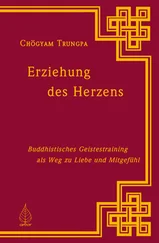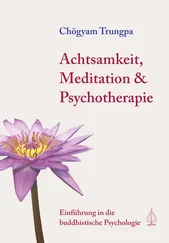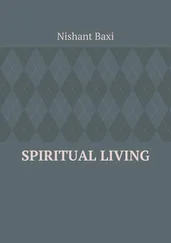Chögyam Trungpa - Cutting Through Spiritual Materialism
Здесь есть возможность читать онлайн «Chögyam Trungpa - Cutting Through Spiritual Materialism» весь текст электронной книги совершенно бесплатно (целиком полную версию без сокращений). В некоторых случаях можно слушать аудио, скачать через торрент в формате fb2 и присутствует краткое содержание. Город: Boston & London, Год выпуска: 2002, ISBN: 2002, Издательство: Shambhala Publications, Inc., Жанр: Религиоведение, Религия, на английском языке. Описание произведения, (предисловие) а так же отзывы посетителей доступны на портале библиотеки ЛибКат.
- Название:Cutting Through Spiritual Materialism
- Автор:
- Издательство:Shambhala Publications, Inc.
- Жанр:
- Год:2002
- Город:Boston & London
- ISBN:0-87773—050—4
- Рейтинг книги:5 / 5. Голосов: 1
-
Избранное:Добавить в избранное
- Отзывы:
-
Ваша оценка:
- 100
- 1
- 2
- 3
- 4
- 5
Cutting Through Spiritual Materialism: краткое содержание, описание и аннотация
Предлагаем к чтению аннотацию, описание, краткое содержание или предисловие (зависит от того, что написал сам автор книги «Cutting Through Spiritual Materialism»). Если вы не нашли необходимую информацию о книге — напишите в комментариях, мы постараемся отыскать её.
Cutting Through Spiritual Materialism — читать онлайн бесплатно полную книгу (весь текст) целиком
Ниже представлен текст книги, разбитый по страницам. Система сохранения места последней прочитанной страницы, позволяет с удобством читать онлайн бесплатно книгу «Cutting Through Spiritual Materialism», без необходимости каждый раз заново искать на чём Вы остановились. Поставьте закладку, и сможете в любой момент перейти на страницу, на которой закончили чтение.
Интервал:
Закладка:
Thirdly, there is the iconography of the “protective divinities.” In the practice of identifying yourself with a particular yidam you have to develop an awareness which throws you. back to your true nature from your confused nature. You need sudden shocks, reminders all the time, an awake quality. This awareness is represented by the protective divinities which are shown in wrathful form. It is a sudden jerk which reminds you. It is a wrathful awareness because it involves leaping. This leap needs a certain kind of energy to cut through confusion. You have to actually take the initiative to leap without any hesitation from the boundary of confusion into openness. You must really destroy hesitation. You must destroy all obstacles you meet on the path. Therefore this divinity is called protective. “Protection” does not mean securing your safety, but it signifies a reference point, a guideline which reminds you, keeps you in your place, in the open. For instance, there is a Mahakala protective divinity called Six-Armed Mahakala who is black in color and stands on Ganesha , the elephant-headed god who here symbolizes subconscious thoughts. This subconscious gossip is an aspect of slothfulness that automatically distracts you from being aware and invites you back to being fascinated by your thoughts and emotions. It especially plays upon the survey nature of your thoughts—intellectual, domestic, emotional thoughts, whatever they may be. The Mahakala brings you back to openness. The intent of the symbolism is that the Mahakala overpowers subconscious gossip by standing on it. The Mahakala represents the leap into penetrating awareness.
Generally, all Buddhist Tantric iconography is included in these three categories: the guru, the yidams and the protective divinities. The iconography of the guru expresses the richness of the lineage. The yidams allow you to identify with your particular nature. Then there are the protective divinities to act as reminders to you. The yidams and the protective divinities are generally shown in varying intensities of wrath, depending upon the intensity of awareness needed in order for you to see your true nature.
The wrathful yidams are always associated with what is known in Tantric terms as vajra anger , the anger which has the tathata quality; in other words, it is anger without hatred, a dynamic energy. This particular energy, whatever Wisdom it may belong to, is invincible. It is completely indestructible, imperturbable, because it is not created but is discovered as an original quality. It is, therefore, not subject to birth and death. It is always depicted as angry, wrathful and warrior-like.
Q: How does transmutation take place?
A: Transmutation takes place with the understanding of shunyata and then the sudden discovery of energy. You realize that you no longer have to abandon anything. You begin to see the underlying qualities of wisdom in your life-situation, which means that there is a kind of leap. If you are highly involved in one emotion such as anger, then by having a sudden glimpse of openness, which is shunyata, you begin to see that you do not have to suppress your energy. You do not have to keep calm and suppress the energy of anger, but you can transform your aggression into dynamic energy. It is a question of how open you are, how much you are really willing to do it. If there is less fascination and satisfaction with the explosion and release of your energy, then there is more likelihood of transmuting it. Once we become involved with the fascination and satisfaction of energy, then we are unable to transmute it. You do not have to completely change yourself, but you can use part of your energy in an awakened state.
Q: What is the difference between jnana and prajna?
A: One cannot regard wisdom as an external experience. That is the difference between wisdom and knowledge, jnana and prajna. Prajna is knowledge in terms of relativity, and jnana is wisdom beyond any kind of relativity. You are completely one with wisdom; you do not regard it as something educational or something experiential.
Q: How do you transmute emotion? How do you deal with it?
A: Well, that is a very personal. question rather than an intellectual one. The whole point is that we have not actually experienced our emotions, although we think we have. We have only experienced emotions in terms of me and my anger, me and my desire. This “me” is a kind of central governing structure. The emotions play the part of messengers, bureaucrats and soldiers. Instead of experiencing emotions as being separate from you, your rather unruly employees so to speak, you must actually feel the texture and real living quality of the emotions. Expressing or acting out hatred or desire on the physical level is another way of trying to escape from your emotions, just as you do when you try to repress them. If one actually feels the living quality, the texture of the emotions as they are in their naked state, then this experience also contains ultimate truth. And automatically one begins to see the simultaneously ironical and profound aspects of the emotions, as they are. Then the process of transmutation, that is, transmuting the emotions into wisdom, takes place automatically. But, as I have said, it is a personal question; we really have to do it. Until we actually do it, no words can describe it. We have to be brave enough to actually encounter our emotions, work with them in a real sense, feel their texture, the real quality of the emotions as they are. We would discover that emotion actually does not exist as it appears, but it contains much wisdom and open space. The problem is that we never experience emotions properly. We think that fighting and killing express anger, but these are another kind of escape, a way of releasing rather than actually experiencing emotion as it is. The basic nature of the emotions has not been felt properly.
Q: When the emotions are transmuted, that doesn’t mean they disappear, does it?
A: Not necessarily, but they are transmuted into other forms of energy. If we are trying to be good or peaceful, trying to suppress or subdue our emotions, that is the basic twist of ego in operation. We are being aggressive towards our emotions, trying forcefully to achieve peace or goodness. Once we cease being aggressive towards our emotions, cease trying to change them, once we experience them properly, then transmutation may take place. The irritating quality of the emotions is transmuted once you experience them as they are. Transmutation does not mean that the energy quality of the emotions is eliminated; in fact it is transformed into wisdom, which is very much needed.
Q: What about sexual tantra? Is that the process of transmuting sexual energy into something else?
A: It is the same thing. When the grasping quality of passion or desire is transformed into open communication, a dance, then the relationship of two people begins to develop creatively rather than being stagnating or being irritating to them.
Q: Does this principle of transmutation apply to sattvic and rajasic and tamasic energy as described in the Hindu tradition? You don’t want to take tamasic energy and turn it into rajasic, but you take it and use it.
A: That’s right, yes. It is very practical, actually. Generally we tend to prepare too much. We say, “Once I make a lot of money, then I will go somewhere to study and meditate and become a priest,” or whatever it is we would like to become. But we never do it on the spot. We always speak in terms of, “Once I do something, then ...” We always plan too much. We want to change our lives rather than use our lives, the present moment, as part of the practice, and this hesitation on our part creates a lot of setbacks in our spiritual practice. Most of us have romantic ideas—“I’m bad now but one day, when I change, I’ll be good.”
Читать дальшеИнтервал:
Закладка:
Похожие книги на «Cutting Through Spiritual Materialism»
Представляем Вашему вниманию похожие книги на «Cutting Through Spiritual Materialism» списком для выбора. Мы отобрали схожую по названию и смыслу литературу в надежде предоставить читателям больше вариантов отыскать новые, интересные, ещё непрочитанные произведения.
Обсуждение, отзывы о книге «Cutting Through Spiritual Materialism» и просто собственные мнения читателей. Оставьте ваши комментарии, напишите, что Вы думаете о произведении, его смысле или главных героях. Укажите что конкретно понравилось, а что нет, и почему Вы так считаете.











